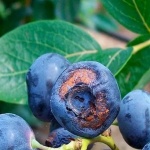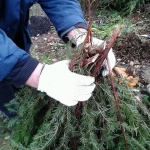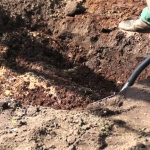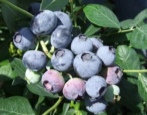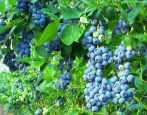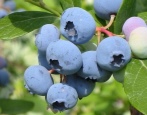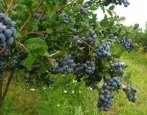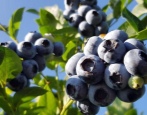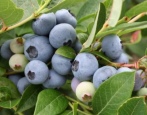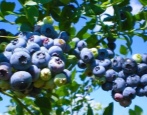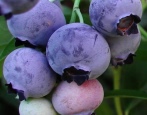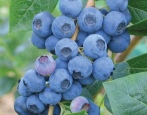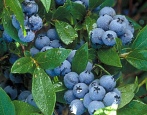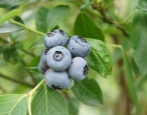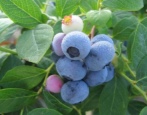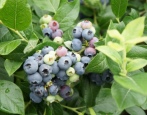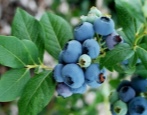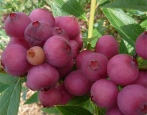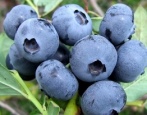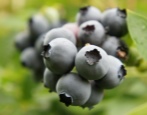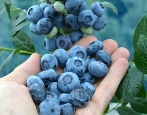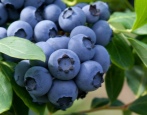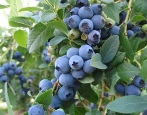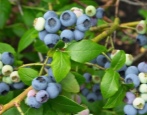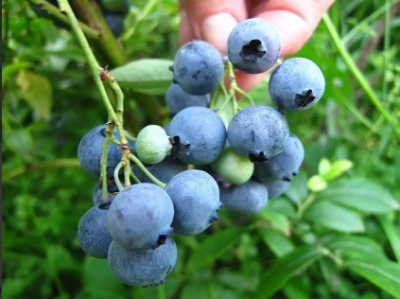
- Authors: Canada
- Ripening terms: mid-late
- Growth type: tall
- Bush height, m: 1,5-1,8
- Taste: sweet
- Yield: good
- Average yield: 6 kg per bush
- Fruit size: medium and large
- Fruit shape: rounded
- Fruit color: light blue, with an ash tint
Some people still believe that blueberries are wild berries that cannot be grown on their own. But this is not at all the case. The culture has long been grown on their plots by gardeners and note that it is very unpretentious to care for and has a stable yield. And caring for blueberries will not complicate even a novice summer resident.
Breeding history
Blueberry Nelson was bred by an American breeder in Canada in 1988. The parental pair were Berkeley and Bluecrop varieties. The culture is grown in almost all corners of the planet, from North America to the eastern part of Russia. Blueberries are most commonly found in cooler northern regions such as Altai and the tundra.
Summer residents fell in love with this culture for its useful qualities and great taste. You can buy seedlings in special stores or nurseries.
Description of the variety
The blueberry bush is tall, reaching from 1.5 to 1.8 m in length. In the southern regions, the height of the shoot can increase up to 2 m. The crown is dense, slightly spreading. Shoots are straight and raised, their color is light green. As they mature, the shoots become woody and become dark brown or gray in color.
The leaves are smooth, alternate and tough. Their length is 2.5 cm. They have a lanceolate shape with a rounded top. The edge of the plate is turned down a little. The color of the leaves is bluish-green, the back surface is slightly lighter. And also the leaves have a small waxy bloom.
All flowers are formed on last year's shoots, collected in small and loose clusters. The cup is shaped like a bell. The buds are slightly drooping, pale pink in color. Flowering takes place from the second half of June and lasts no more than two weeks.
Fruit characteristics
Fruits of different sizes are formed, most often these are medium and large berries. They are round in shape, up to 20 mm in diameter. Larger ones can grow up to 25 mm. The mass of one fruit is 1 g.
The color of the berries is light blue, with a slight ashy blotch and bloom, which is formed due to the waxy gloss. The peel is dense, elastic. The pulp is tender, juicy with small seeds inside.
Blueberries adhere well to the stalk and do not crumble. Harvesting is easy without the use of force.
The purpose of the fruits is universal, so the berries can be eaten fresh, made jams or preserves, and also frozen.
Good transportability and keeping quality are noted. In a dark, cool place, the crop can be stored for up to 2.5 weeks.
Overripe berries begin to lose their elasticity and become very soft, so harvesting is difficult, as the fruit simply begins to burst in the hands.
Taste qualities
The berries have a pleasant wine taste, without any astringency. Manufacturers note that one fruit contains a large amount of vitamins of groups B and C, as well as iron, calcium and phosphorus. Due to the large amount of vitamins in its composition, blueberries are gaining popularity among gardeners.
Ripening and fruiting
Like all blueberry varieties, Nelson is a mid-late crop.The buds form in June, and the berries take from 40 to 55 days to ripen. Therefore, the harvest takes place in the second half of August. Fruits ripen in several passes, fruiting is extended.
Yield
Good yields are noted by gardeners. An average of 4 to 6 kg of berries are harvested from one bush. With proper care, indicators can grow up to 8-10 kg.
Self-fertility and the need for pollinators
The culture is self-fertile and the fruits can form naturally. But some summer residents note that additionally pollination has a good effect on the yield and quality of berries.
For additional pollination, varieties are selected such as:
Berkeley;
Spartan;
Herbert;
Pemberton.
Growing and care
In order for the variety to give a good harvest, it is necessary to comply not only with agrotechnical requirements, but also to choose the right timing and place of planting.
For disembarkation, choose either early spring or autumn. Nelson is most often planted in the spring, as during this time the culture gets used to new conditions. Planting is carried out only on condition that the soil is sufficiently warm.
It is better to choose a place that is sunny, with a well-ventilated area, but so that there are no strong drafts. There should not be too high buildings nearby, as in the shade the berries will begin to shrink and lose their taste.
The soil should be loose and of medium acidity. Normal acid levels should be between 3.5 and 5.
Groundwater must be at least 70 cm above ground level. If the soil does not have acids, then it is best to fertilize it with peat, tree bark or needles.
Landing is carried out as follows. It is necessary to dig a hole 60 cm deep, and the width should be 1 m. A layer of pebbles is laid at the bottom of the hole as a drainage system so that water does not stagnate in the ground. A small hill of fertile soil is made over the drainage, and a seedling is lowered onto it. The roots are gently straightened, avoiding creases. Then the roots are gradually covered with earth. The soil is compacted.
Everything is plentifully spilled with warm water and mulched, and peat can also be poured into the trunk circle.
Subsequent care of the culture will be as follows.
Watering is carried out in moderation when the earth begins to dry out. On average, the procedure is carried out 1-2 times a week. Excess moisture, like its lack, adversely affects the bushes. Therefore, it is worthwhile to draw up an irrigation schedule. If the weather is too dry or, conversely, too humid, then watering is adjusted.
Fertilizing Nelson blueberries is necessary taking into account the level of acidity in the soil. If the soil is not too acidic, then additional acids must be added during watering. The signs of deficiency are the reddening of the leaves in the spring or during the flowering period. Among the dressings, ammonium nitrate, urea, potassium sulfate or nitroammofoska, powdered sulfur, citric acid are most often used. In the spring, nitrogen-containing fertilizers are additionally applied. And during the flowering period - calcium, manganese and phosphorus.
Pruning must be carried out several times per season, since the culture is actively throwing out new shoots. On average, from 4 to 7 shoots are removed from one bush. And also dry, broken or extinct branches are removed.
The manufacturer declared that the variety is frost-resistant. The bush can withstand up to -35 ° C. But in cool regions with sharp temperature changes, the bushes are covered with non-woven fiber. And the trunk is covered with dry leaves or peat. The layer should be done about 10 cm.
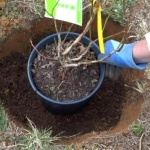
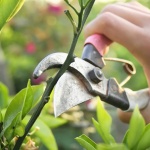
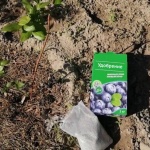
Disease and pest resistance
The culture does not often get sick, especially if all agrotechnical features and care are properly observed. But for prevention, it is best to spray with drugs such as Fundazol or Iskra. They will help protect the bush from a number of fungal diseases, as well as prevent the spread of existing ones.
Such spraying should be carried out 3 weeks before the ripening of the first berries. Otherwise, the first harvest cannot be eaten.
Wood ash processing is considered safe. It is either brought in solid form under the bush, or diluted in water and sprayed.
